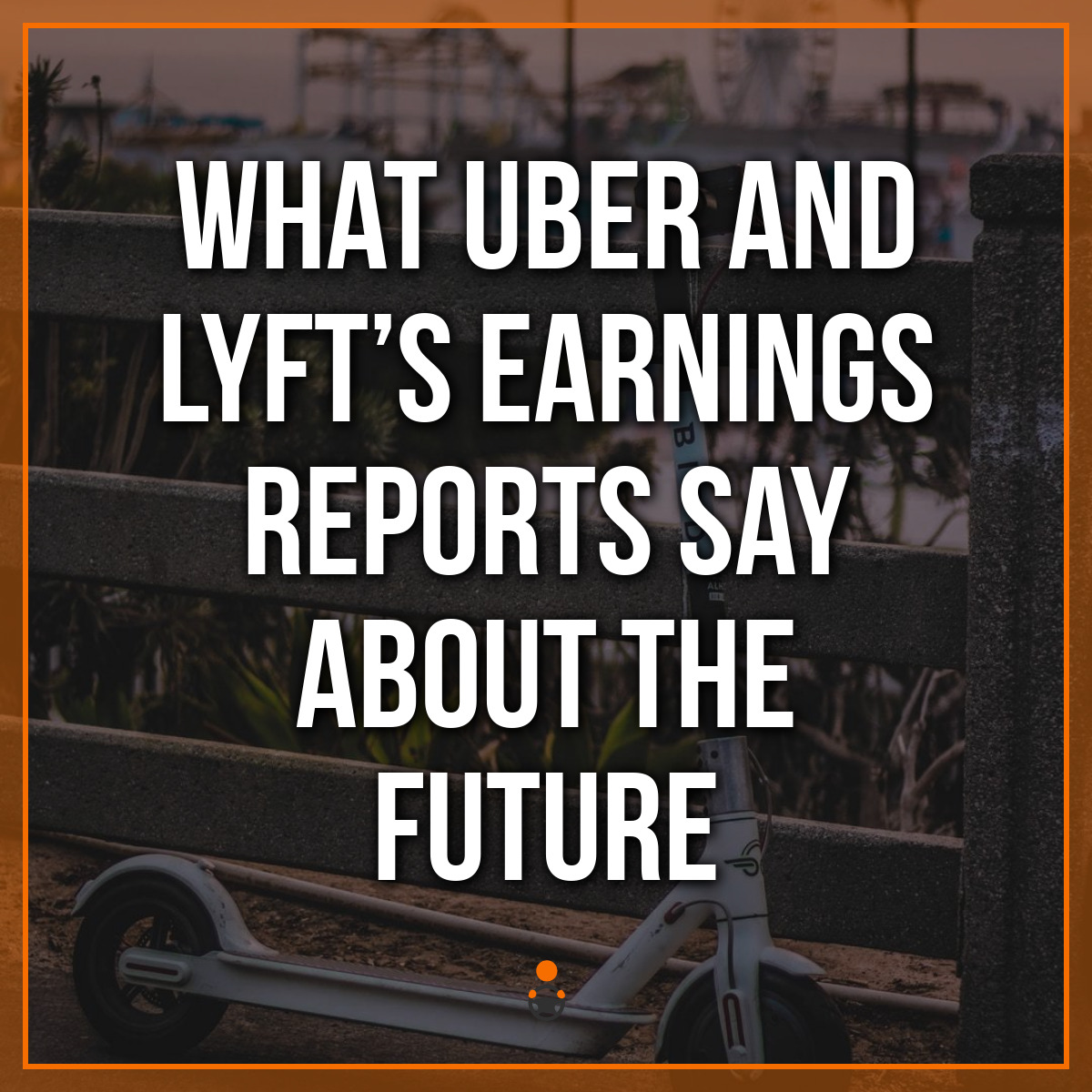In this week’s roundup, senior RSG contributor John Ince primarily covers the story of Uber and Lyft’s Q3 earnings reports. What did they say, and what do those reports mean for drivers? In addition, we cover some breaking Uber and Lyft news regarding Uber’s large fine in New Jersey and bad news for Lyft scooters.

Uber’s Earnings Report
According to CNBC, “Uber reported Q3 2019 earnings that beat analyst estimates.
The company also reported a quarterly loss topping $1 billion.
Here are the key numbers:
Loss per share: 68 cents vs. 81 cents expected, according to Refinitiv estimates
Revenue: $3.81 billion vs. $3.69 billion expected, according to Refinitiv
Uber reported a net loss of $1.16 billion for the quarter, topping its $986 million loss during the same quarter last year.
What Did We Learn From Uber’s Earnings Report?
This is a little game companies play – they try to just beat Wall Street expectations. Uber and Lyft beat the estimates, barely.
But with Uber, my problem is with emphasis. Uber wants us to focus on growth, while I want to focus on profitability. Uber is losing almost a billion a quarter, and that’s not good. In fact, this quarter’s numbers constitute the third largest loss ever.
Uber tries to get us to focus on all kinds of things that have little to do with profitability. And when they do talk about profitability it’s way off into the future. Uber CEO Dara Khosrowshahi says, “We know there is the expectation of profitability, and we expect to deliver for 2021,” Khosrowshahi said.
The expectation of profitability in 2021 is far enough in the future that it’s difficult to think about. That’s the way Khosrowshahi wants it.
Lyft’s Earnings Report
According to Business Insider, “earnings: $-0.41 per share versus an expected $-0.72 per share
Revenue: $$955.6 million versus an expected 916.2 million
Active riders: 22.3 million versus an expected 22 million
Revenue per active rider, a closely watched metric in the industry, also rose to $42.82 for the quarter, up from $33.63 a year ago.
The company line: Our third quarter results demonstrated the significant progress Lyft has made on our path to profitability,” CEO Logan Green said in a press release. “Record revenue was generated by strong growth in both Active Riders and Revenue per Active Rider as we continue to increase engagement through product innovation and execution.”
What Did We Learn About Lyft’s Earnings Report?
Lyft held out its focus on ridesharing. “We’re not doing food, not doing trucking,” said CFO Brian Roberts. “We are 100% focused on our transportation network and platform scale to unlock more efficiency.”
According to CNBC, “In addition to the better-than-expected results and brighter guidance, the company reported it had 22.3 million “active riders” on its platform in the third quarter, compared to consensus estimates of 22.1 million active riders. Revenue per active rider surged 27% year-over-year to $42.82.”
But don’t confuse that with coming out ahead in the long run. Lyft’s revenue growth is slowing and their profit numbers don’t look very good either. On the plus side, it appears that Lyft’s looking better than Uber, but that’s not saying much.
Uber Fined $649 Million for Saying Drivers Aren’t Employees [NYTimes]
Sum and Substance: New Jersey has demanded that Uber pay $649 million for years of unpaid employment taxes for its drivers, arguing that the ride-hailing company has misclassified the workers as independent contractors and not as employees.
The state’s Department of Labor and Workforce Development issued the request this week to Uber and a subsidiary, Raiser, after an audit uncovered $530 million in back taxes that had not been paid for unemployment and disability insurance from 2014 to 2018.
Analysis: Well, this isn’t good news for Uber, especially on the heels of its earnings report. As the article reports, this represents a major escalation in how states are viewing ‘independent contractor’ employment.
Could this mean New Jersey is the next state to follow California in implementing their own sort of AB5? This could be a start.
Lyft is Ceasing Scooter Operations in Six Cities and Laying Off 20 Employees [TechCrunch]
Sum and Substance: In an industry where unit economics and rider utilization are key to running a profitable business, perhaps it’s better to cut your losses early on. Lyft notified employees today that it’s pulling its scooters from six markets: Nashville, San Antonio, Atlanta, the Phoenix area, Dallas and Columbus.
“We’re choosing to focus on the markets where we can have the biggest impact,” a Lyft spokesperson told TechCrunch. “We’re continuing to invest in growing our bike and scooter business, but will shift resources away from smaller markets and toward bigger opportunities.”
Analysis: [Editor’s Note] As a Phoenix native, I wasn’t shocked that Lyft is pulling its scooters from ‘the Phoenix area.’ Who, other than naive ASU students, was really using these, especially in the summer? I can’t say I saw a lot of professionals whizzing around on the Lyft scooters in downtown Phoenix. The green bikes saw more action than the scooters!
Lyft finally came to the same conclusion in this announcement, saying they came to this decision because they ‘found that cities with the greatest population density are best for micromobility’ – which Phoenix (and presumably Nashville, San Antonio, Atlanta, Dallas and Columbus) doesn’t have.
It will be interesting to see where scooters go from here. Lyft says they want to shift from smaller markets, but maybe smaller areas (more tourist-centric places?) would be a better place to promote scooters. What do you think?
Readers, what did you think of this week’s roundup?
-John @ RSG with additional reporting from Melissa Berry




